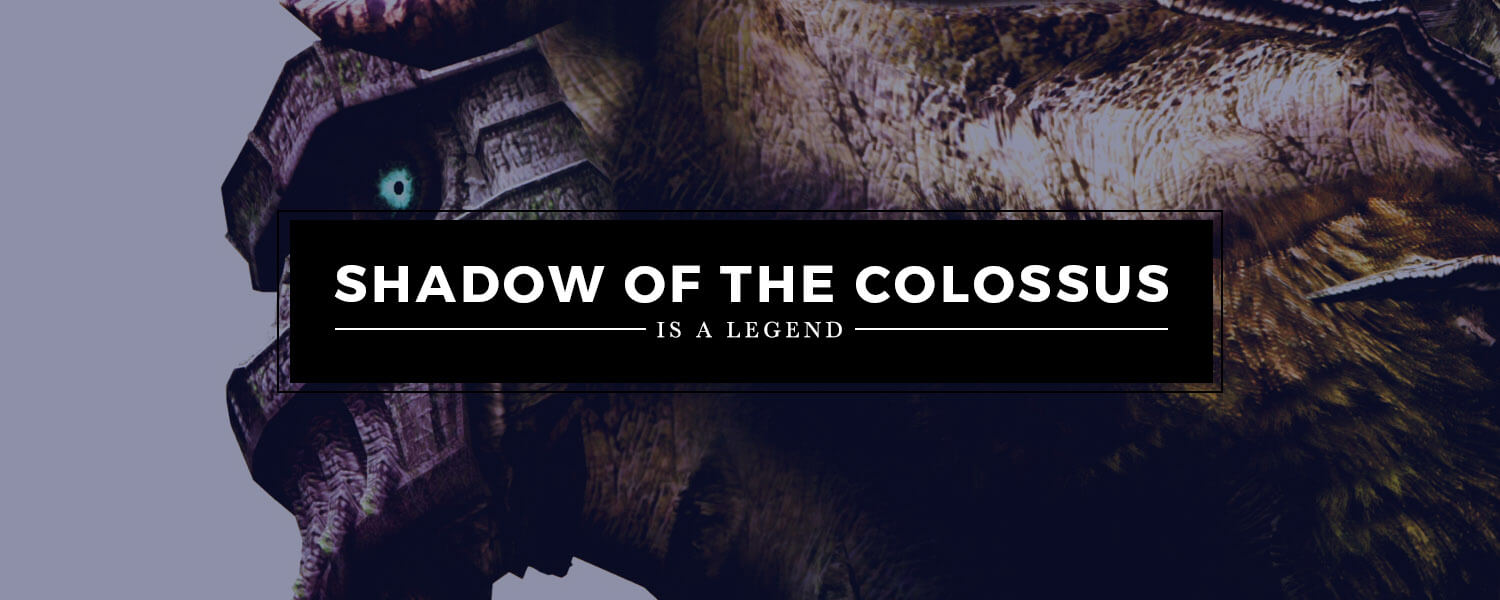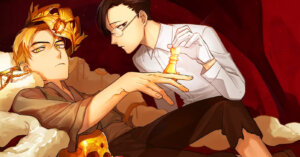Those of you who grew up in the PlayStation 2 era might remember this game. But if you had never heard of Shadow of the Colossus, I will attempt to make you try the game. Why? There are many reasons. One, Shadow of the Colossus is available in PlayStation 2 and 3. You have a fairly limited time to try the game before the consoles die from old age. Two, The Last Guardian, a highly-anticipated game created by the same game designer is coming out soon. Three, the game is often referenced and studied as one of the best games created to date.
Unfortunately, I cannot talk about the game without spoiling, so I will be hide the most offending ones.
History
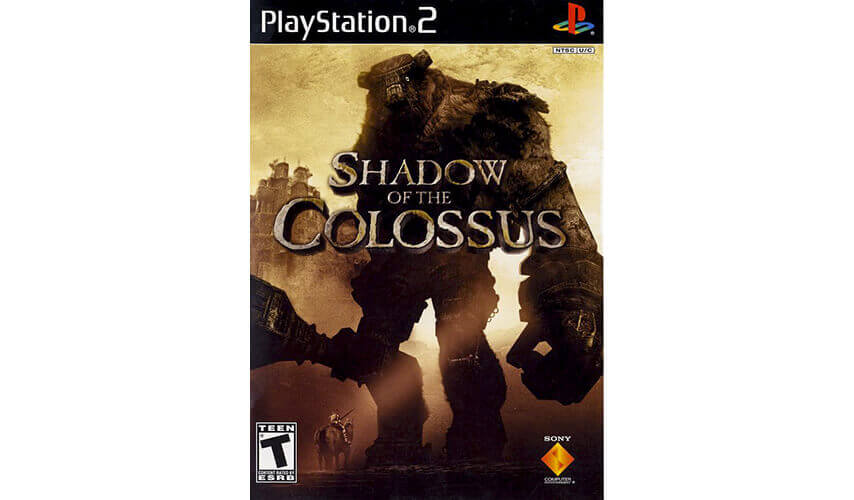
Fumito Ueda (上田文人 Ueda Fumito) is the creator of the game and is often quoted as an example of an influential art game director. Before SotC, Ueda and his team created Ico (イコ Iko), an inspirational game that cemented his name as a visionary game director and designer. Shadow of the Colossus came out in 2005. In Japan, the name is Wander and the Colossus (ワンダと巨像 or Wanda to Kyozou). Wander is the name of the protagonist you control. I do not have to tell you that the game won many awards, right? Oh wait, I just did.
That grand-sounding musical score above was written by Kou Otani (大谷 幸, Outani Kou). He is a veteran in the Japanese music composing scene. Aside from composing for this epic game, Otani has created scores for Gamera films, many different anime series (such as Eyeshield 21, Shakugan no Shana, Hakuouki, and Gundam Wing: Endless Waltz), and several video games.
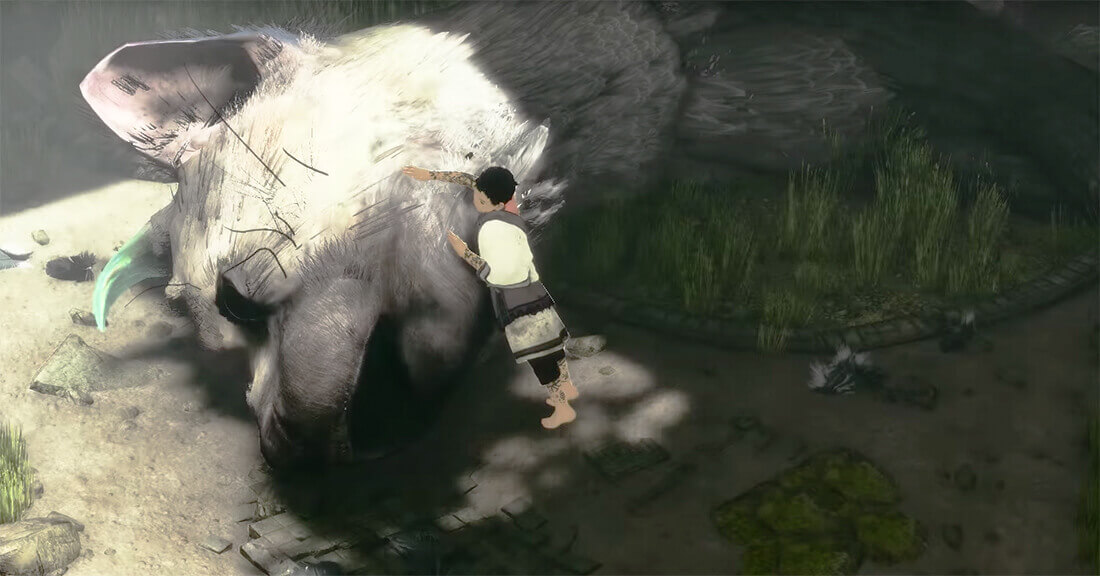
Ueda’s latest project, The Last Guardian, has been in development since 2007. Due to many circumstances, the project has been delayed numerous times. Only in the past couple of years have we found out The Last Guardian is going to be released on PlayStation 4 this year. Journalists and gamers are expecting great things from the new game thanks to the success of both Ico and Shadow of the Colossus.
Impressive tech feats
SotC is quite a technical marvel by itself. It used an interesting rendering technique that was above the norm then. People often talk about how Wander’s animation fits with his youth and inexperience. Some praised that even when you are on Agro, the horse, you are still controlling Wander who tries to control a steed. Others commend the motion physics that make the experience feel real. There are more details about its technological accomplishments that you can read over at this article.
Amazing gameplay and story
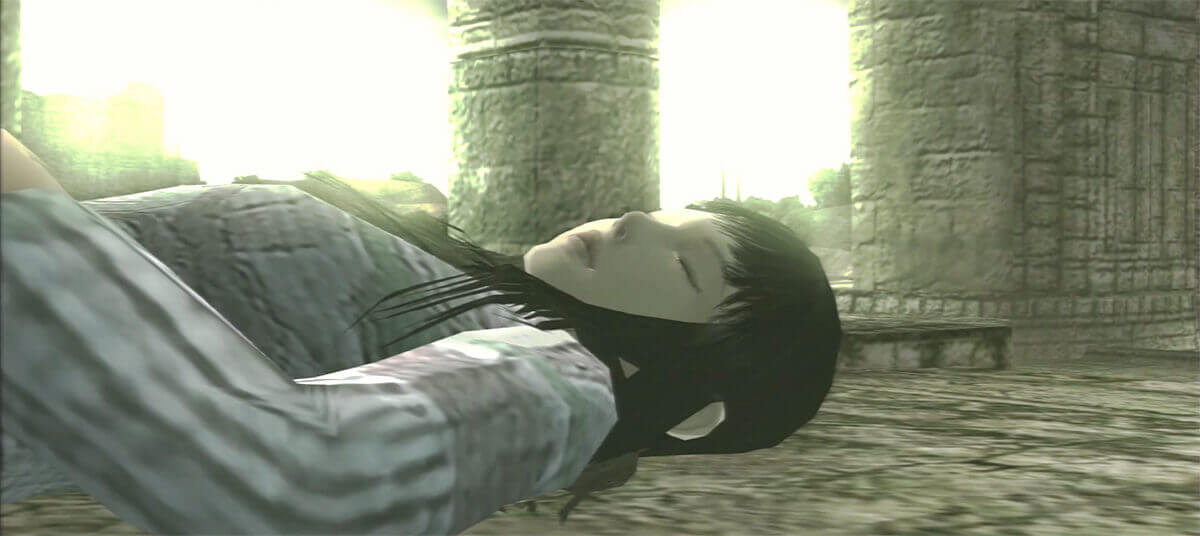
SotC starts off by showing Wander carrying Mono, a deceased young woman, on Agro to a secluded yet forbidden region. He places Mono on a table at the Shrine of Worship. Wander calls for Dormin wanting to make a deal to revive Mono. Dormin, a malevolent entity, notices that Wander has a certain magical sword. Dormin agrees to revive Mono if Wander could destroy sixteen colossi with the sword. The entity also cautions that Wander will have to pay a heavy price on top of that. Wander takes up the offer nonetheless.
Great environment and boss battle puzzles
Aside from your sword, you are equipped with a bow and arrows. You also become acquainted with your health bar and your grip/stamina meter. Wander must find each colossus by following the light reflected from his magic sword. Often, you need to scale the terrain and do some platforming puzzles to reach the colossi.
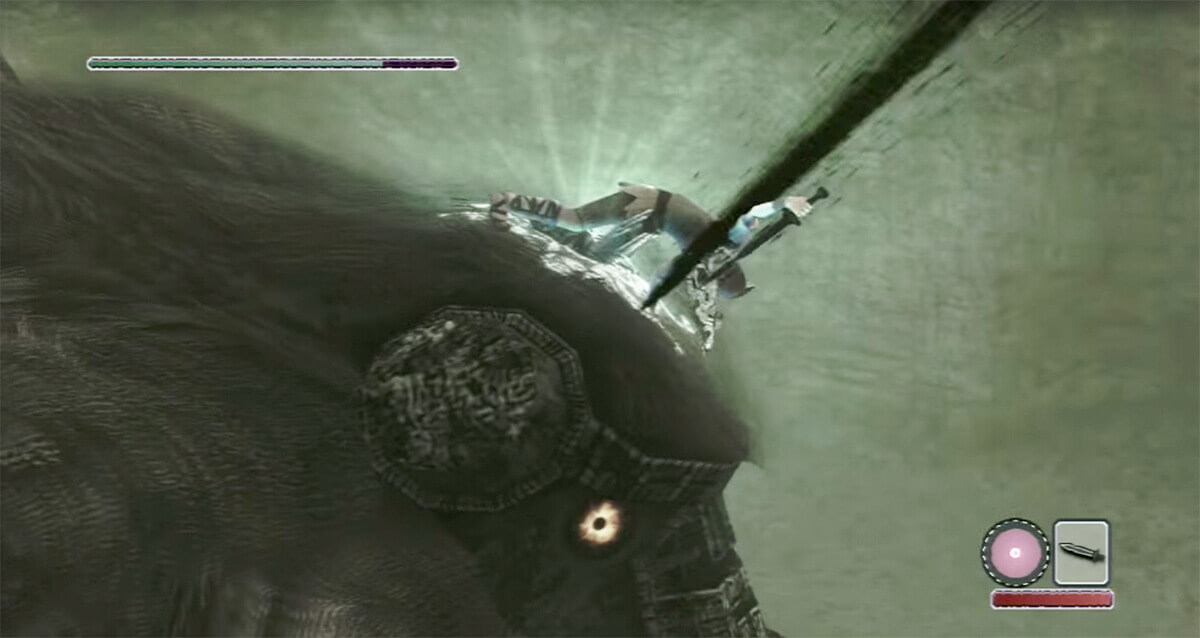
There is only one way to kill the giant beings, stab the sword at glowing crests located on different body parts of the colossi. To do that, you often need to use your surroundings to climb the colossi. Of course, the giants will try to shake you off. Here is where your grip/stamina gauge comes in. You can climb and hold onto the beings when you have the stamina. Otherwise, you will let go and fall. You can replenish your stamina by simply standing or running around. The game teaches you to hold onto things. This is important.
There are many games that pit you against giant monsters, but there are none like this. Thanks to the contrast between the vastness and emptiness of the environment, the gigantic scale of the colossi, and the puny young man that Wander is, you feel insignificant. Moreover, after slaying your first colossi, who just happens to be walking about and not paying you any mind, you are treated to a grand but sad requiem. Every colossus you fell slowly and ungracefully crashes onto the earth. Wander becomes noticeably more corrupted the more he slaughters. Killing those colossi becomes a battle between completing an objective as a gamer and an introspection of your action. But you must go on, for Mono’s sake.
Dealing with loss and grief
Shadow of the Colossus deals with loss and grief. Wander has just lost Mono and wants to revive her no matter the cost. In striking a deal with Dormin, he clings onto the small hope and undertakes monumental tasks to bring her back. You may not feel the same loss towards Mono, but you may feel a similar kind if you play the game towards the end. I shall elaborate in a spoiler section below.
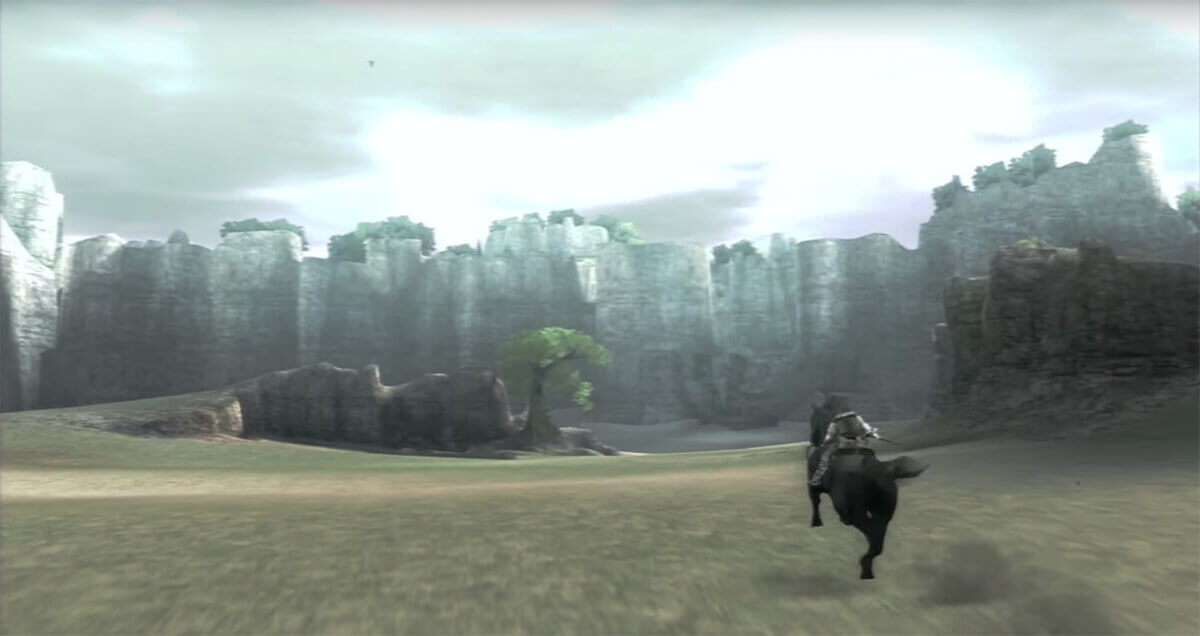
Agro, your trusty companion steed who travels with you around the forbidden land is your only friend in the game. You can call her (yes, Agro is confirmed to be a female) toward you when you are separated. In some fights, she is an essential part of solving how to climb onto the colossi. After many fights together, you will inevitably form a bond with her.
On the way to the last colossus, you will travel across a collapsing bridge above a vast chasm. Agro flings you to safety while sacrificing herself. You may stop. Perhaps, you gasp. Maybe you start crying a little. You may even want to quit. But you know the end is near and so you pick yourself up and go on. You trudge on with Wander losing yet another important figure in his life.
The player adds to the narrative
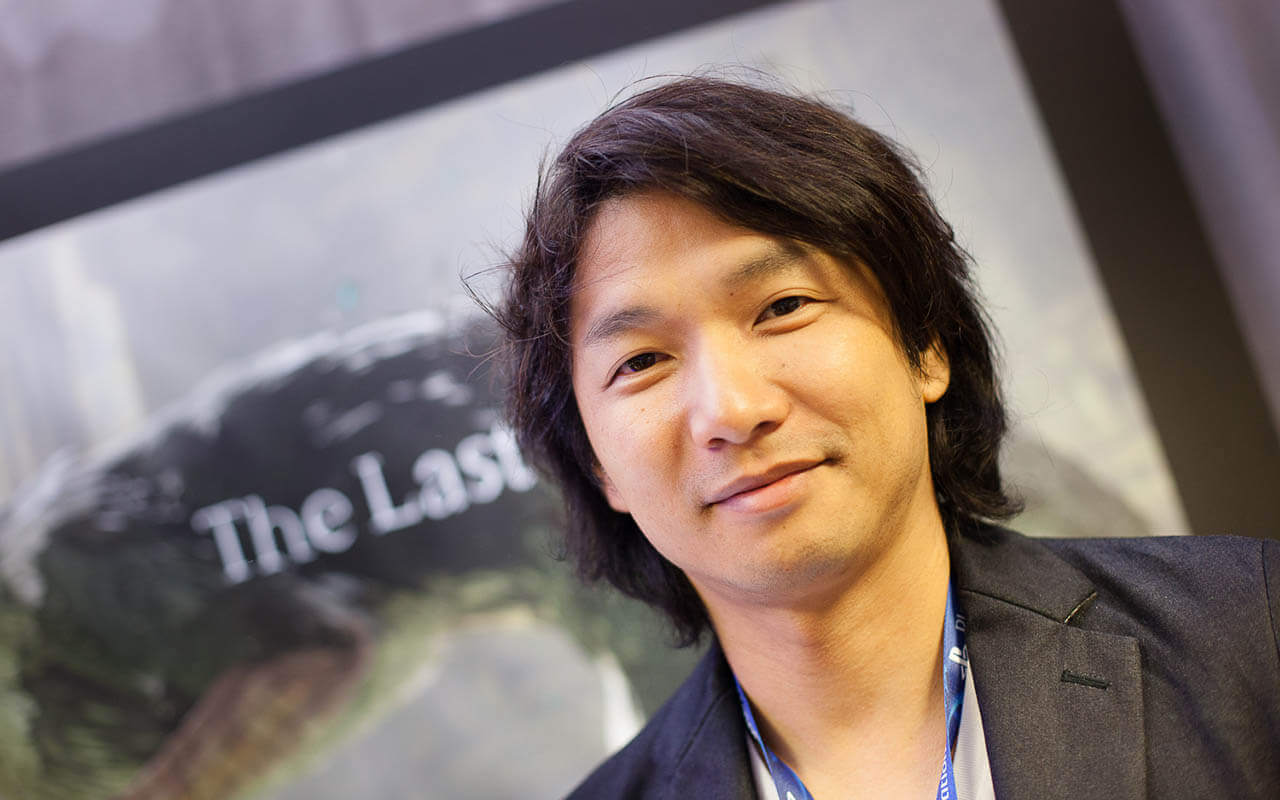
Ueda designed the game with minimalism in mind. From gameplay to narrative, he only uses what is essential to convey his idea. There is no detailed story of what happened before the game. Nor is there intricate exposition to the land, the colossi, and who Dormin is.
You, the player, fill in the blank spaces. You read between the sparse lines of dialogue, experience the pain, deduce more of the story as you wander through the environment, and talk to other players about what has happened.
That ending sequence with a message
Okay, I am going full spoiler here. As such this is also the time to part. Suffice to say the mechanic plays an extremely important part in conveying what Ueda wants to say.
I highly suggest this game if you had not tried it. See you next TBT! Spoiler below.
Throughout the course of the game, you see Wander slowly being corrupted. His skin darkens and he grows horns from his skull. After defeating the last colossi, Wander is transported back to the shrine where he meets a group of pursuers lead by a man named Emon. He knows what Wander has been up to and is clearly aware of what Dormin is.
The weakened and possessed Wander is stabbed by one of Emon’s followers. In doing so, Dormin takes over Wander’s body, becoming a giant shadowy monster. YOU become what you were hunting, a colossus, a corrupted monster. As you try to squash the little humans for foiling your plan to revive Mono, you realize how slow you move and how ugly you have become.
Emon hurriedly casts the magic sword down a well. It creates a magical vortex that sucks Dormin and you towards it. The only thing you can do is to grab hold of something as long as you can, just like when you scale up every single colossus you have met. As you are holding on to the floor, the camera looks at Mono in the distance. You are so close.
However, the game wants you to let go. Wander has been holding on to his grief and loss all this time. Our main character is powerless against the vortex. Soon after Wander disappears, Mono awakens. Agro, who fell down the chasm, survives and limps towards Mono. Together, they walk towards the well and discover a baby with two horns. It is Wander who has been reborn.
The message of this ending sequence and the game is to not hold onto grief for too long. Wander was angry and would make a deal with anyone for Mono to return. In the end, he needs to face it, accept it, and learn to let it go. In doing so, one can start anew.
Sources: Wikipedia (Fumito Ueda), Team Ico Wikia, and Making of Shadow of the Colossus
Big thank you to our supporters
From their continous support, we are able to pay our team for their time and hard work on the site.
We have a Thank-You page dedicated to those who help us continue the work that we’ve been doing.
See our thank you page